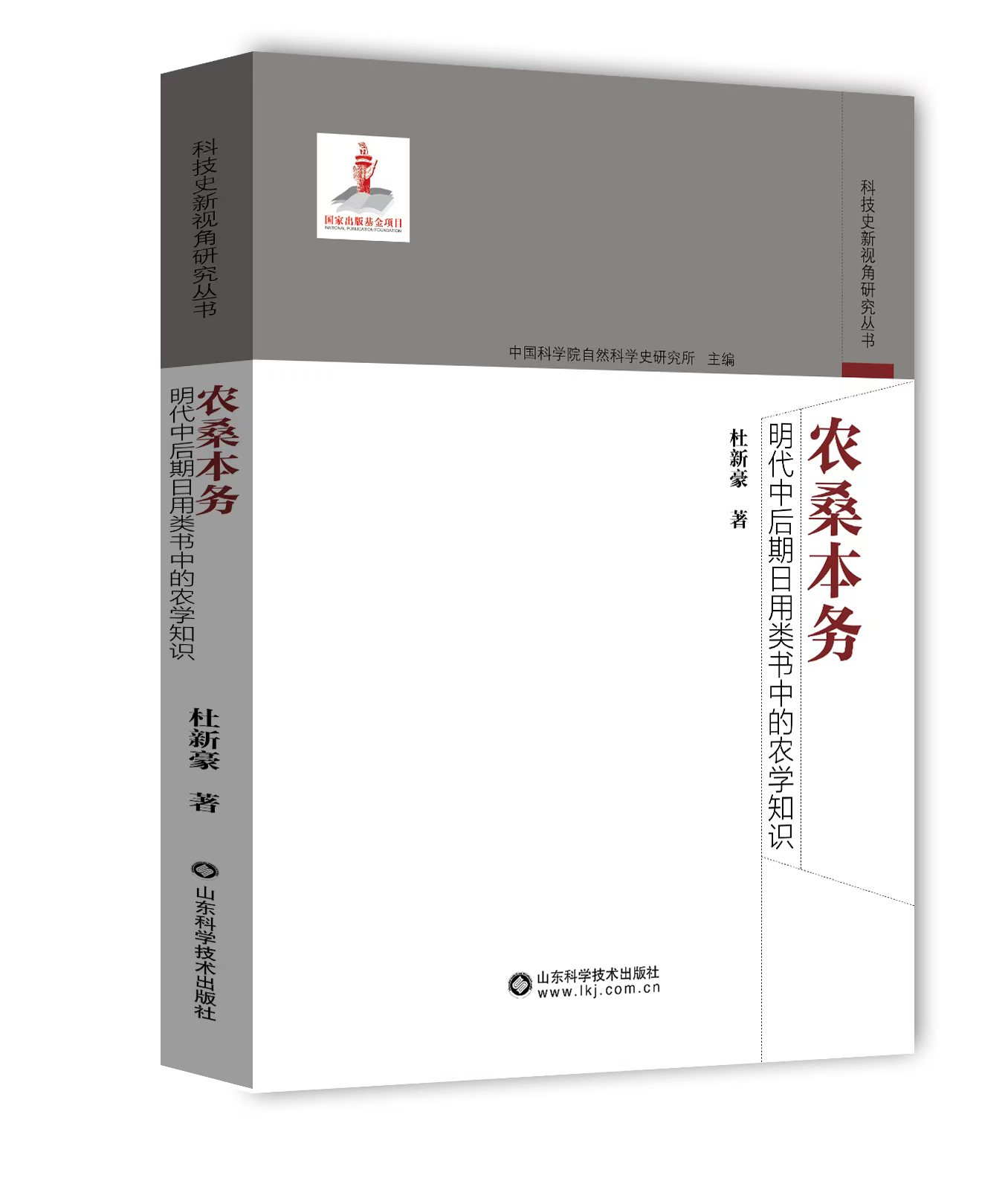- Book Review : Nongsang benwu: Mingdai zhonghouqi riyong leishu zhong de nongxue zhishi [Fundamentals in Agriculture and Sericulture: Agronomic Knowledge in Daily-use Encyclopedias in the Mid and Late Ming Dynasty]by Du Xinhao
Author:Francesca Bray
Technology and Culture, Volume 66, Number 2, April 2025, pp. 543-544

Du Xinhao belongs to the multi-talented cohort of young Chinese historians of technology applying sinological virtuosity to open new perspectives on global questions. Du’s richly documented study of the farming sections of the popular encyclopedias that proliferated in early modern China develops some compelling insights into technical knowledge production that will be of interest well beyond the field of Chinese studies.
By around 1500 the Ming dynasty (1368-1644) was a prosperous consumer society with an increasingly commercialized and specialized agricultural sector and a booming publishing industry. Literacy was no longer confined to the ruling bureaucratic elite but was slowly permeating every level of society, making inroads in villages as well as towns. Commercial printers flooded the market with cheap illustrated books for popular audiences, including daily-use encyclopedias crammed with practical information ranging from ritual, etiquette and law to farming, remedies and recipes. Du’s analysis is based on a close critical study of around twenty such works, compiled and published – often in multiple revised editions – during the mid-late Ming, between around 1500 and 1650.
The origins and development of these popular encyclopedias, and what they reveal about the mediation and materialization of knowledge, have recently attracted detailed attention from historians of literacy and publishing, ethics, art and society. Most historians of agriculture have been content, by and large, to follow late imperial intellectual precedent in categorizing the encyclopedias’ agronomic content as a straightforward simplification of materials from specialist treatises, organised and packaged to render them accessible to the less educated. Du’s interpretation is more nuanced. Informed by reception studies and the historiography of the everyday, chapters on origins and transmission, agricultural and forecasting technologies, and the functions of illustrations, illuminate the social transformations within which this genre came to flourish. They highlight the complex mediating role played by publishers and the scholar-compilers and illustrators they hired in the formulation and transmission of technical knowledge.
Through the mid-late Ming a lively market in land and the profitability of commercial farming expanded the landowning class and the ambitions of tenants. Meanwhile the Little Ice Age together with the market fluctuations typical of a commercialized economy increased the risks and uncertainties of farming life. The nongsang (agronomy) sections of the daily-use encylopedias catered to the needs of all classes of farmer, providing straightforward technical instructions for a wide range of farm operations, from plowing and pruning through rotations and the relative profits of different farm products, to instructions for predicting weather or markets through natural signs or divination. Du’s meticulous comparisons between specialist agronomic treatises and daily-use encyclopedias confirm that this era was marked by dramatic changes in the understanding of what constituted knowledge and who was deemed to possess it: rather than a one-way flow down from the educated elite to the masses, knowledge became a good exchanged in both directions.
Du illustrates this sea-change through the case of a famous daily-use book first published around 1497, the Bianmin tuzuan (Collected images for the people’s convenience). The genre of daily-use encyclopedias goes back to the eleventh century, but early versions took classic textual sources as their source of authoritative knowledge, even for technologies in continual evolution such as farming. Bianmin tuzuan bridged two epistemological worlds. It was enthusiastically adopted by governors and prefects across China’s provinces as a handbook for top-down agricultural improvement. But it also set a pattern for later daily-use encyclopedias by incorporating recent technical innovations and local variations in practice to offer its readers a pragmatic approach to knowledge based on farmer experience.
Whereas previously the rubric of nongsangyao (essentials of farming) emphasized cereals as the staple foods that should be the core of the farming system, in the later Ming works the rubric expanded to acknowledge crops like cotton, flowers or vegetables as legitimate bases for a viable farming enterprise. Responding to the demands of an agrarian market economy, the daily-use compilations were snapped up by rural households, selling like hot cakes across China and in Korea and Japan. Equally significant in terms of epistemological impact, the genre influenced (or at least reflected) new approaches to knowledge among elite intellectuals. Xu Guangqi, a prominent statesmen and scientist of the late Ming, not only included technical information from Bianmin tuzuan in his magisterial Nongzheng quanshu (Comprehensive treatise on agricultural administration, 1639) – he likewise gave equal consideration to commercial crops along with cereal staples, acknowledging the importance of markets and comparative advantage in farmers’ decisions.
This study is an impressive contribution to the general study of knowledge production, inserting China into what is still a largely Europe-centred discussion on technical literacy. One hopes that a translation will soon be forthcoming.
Francesca Bray is emerita professor of social anthropology at the University of Edinburgh. She has published extensively on the history of agriculture in China.
https://muse.jhu.edu/pub/1/article/956858




